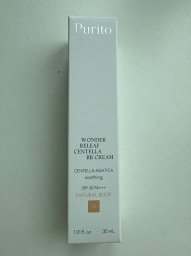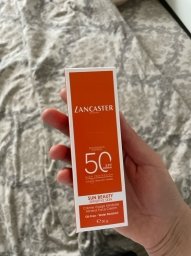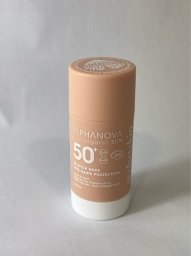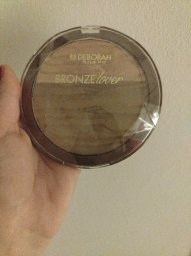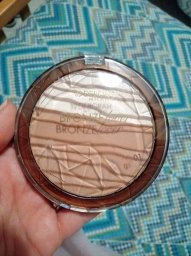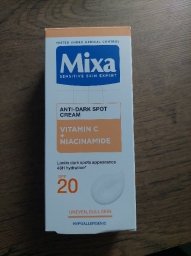 "Strong penalty" in the following categories :
"Strong penalty" in the following categories :
 "Low penalty" in all other categories.
"Low penalty" in all other categories.
- Origin(s): Mineral
- Other languages: Filtr UV (dwutlenek tytanu), Filtre UV (Dioxyde de titane), Filtro UV (Diossido di titanio), Filtro UV (Dióxido de titanio), Filtro UV (Dióxido de titânio), Filtru UV (dioxid de titan), UV filter (oxid titaničitý), UV filter (titan dioksid), UV filtr (oxid titaničitý), UV filtresi (Titanyum Dioksit), UV szűrő (titán-dioxid), UV филтър (титаниев диоксид), UV 필터(이산화티타늄), UV-Filter (Titandioxid), UV-filter (titaniumdioxide), UVフィルター(二酸化チタン), УВ филтер (титанијум диоксид), מסנן UV (טיטניום דו חמצני), فلتر الأشعة فوق البنفسجية (ثاني أكسيد التيتانيوم)
- INCI name: TITANIUM DIOXIDE
- EINECS/ELINCS number: 236-675-5
- Food additive: E171
- Classification: Regulated, UV mineral filter
- Organic-compatible (COSMOS Reference)
Namely
Titanium dioxide is a very abundant mineral on earth: it is in fact the 9th most abundant chemical element in the earth's crust. It can be used in cosmetics as a UV filter or as a white colorant. When it is a UV filter, it can be reduced in the form of nanoparticles: the CSSC approved the use of titanium dioxide in the form of nanoparticles in sun creams from 2014, in concentrations less than 25%. EC Regulation 2016/1143 of July 2016 freed the use of Titanium dioxide in this form in cosmetics. Titanium Dioxide reduced to the size of nanoparticles is authorized in Organic, and makes it possible to eliminate the unsightly whitish effect caused by this mineral filter when it is used in its micrometric state, that is to say in its original size. Please note, however, that the manufacturer is required to mention (NANO) or [NANO] next to the name of the ingredient in the INCI list, when this is the case.
In 2006, the International Agency for Research on Cancer (IARC) classified titanium dioxide TiO2 in the group of substances "possible carcinogens in humans" (group 2B): when inhaled regardless of the size of the Nano particle or not. In 2016, ANSES submitted to ECHA (European Chemicals Agency) a proposal for the classification of titanium dioxide as a carcinogen by inhalation (re-evaluation in category 1B).
As you have understood, the case of Titanium Dioxide, the only UV filter authorized in Bio with Zinc oxide, is very complex. However, we note that it mainly raises questions and controversies when it is inhaled/swallowed and/or is used in the nanoparticle state.
Titanium Dioxide (E171) has been banned since January 1, 2020 in France in food products, which is why we display it in red in dental hygiene products.
In 2006, the International Agency for Research on Cancer (IARC) classified titanium dioxide TiO2 in the group of substances "possible carcinogens in humans" (group 2B): when inhaled regardless of the size of the Nano particle or not. In 2016, ANSES submitted to ECHA (European Chemicals Agency) a proposal for the classification of titanium dioxide as a carcinogen by inhalation (re-evaluation in category 1B).
As you have understood, the case of Titanium Dioxide, the only UV filter authorized in Bio with Zinc oxide, is very complex. However, we note that it mainly raises questions and controversies when it is inhaled/swallowed and/or is used in the nanoparticle state.
Titanium Dioxide (E171) has been banned since January 1, 2020 in France in food products, which is why we display it in red in dental hygiene products.
Restriction in Europe:
IV/143, VI/27, VI/27a (nano)
Titanium Dioxide (NOT NANO)
Maximum permitted concentration as UV filter: 25%.
Titanium Dioxide (NANO)
Maximum permitted concentration as UV filter: 25%.
Do not use in applications that may lead to exposure of the end-user's lungs by inhalation.
Only nanomaterials with the following characteristics are permitted:
- purity ≥ 99 %,
- rutile form, or a rutile mixture with up to 5 % anatase, with a crystalline structure and a physical appearance of spherical, needle or lanceolate aggregates,
- median particle size value ≥ 30 nm based on the numerical size distribution,
- shape factor from 1 to 4.5 and specific surface area expressed in volume ≤ 460 m2/cm3,
- coated with silica, hydrated silica, alumina, aluminum hydroxide, aluminum stearate, stearic acid, trimethoxycaprylylsilane, glycerine, dimethicone, hydrogenated dimethicone, simethicone,
or coated with one of the following combinations:
- silica at a maximum concentration of 16% and cetyl phosphate at a maximum concentration of 6%,
- alumina at a maximum concentration of 7 % and manganese dioxide at a maximum concentration of 0,7 % (not to be used in lip products),
- alumina at a maximum concentration of 3 % and triethoxycaprylylsilane at a maximum concentration of 9 %,
- photocatalytic activity ≤ 10 % compared to the corresponding uncoated or undoped reference,
- photostability of nanoparticles in the final formulation.
Titanium Dioxide (NOT NANO)
Maximum permitted concentration as UV filter: 25%.
Titanium Dioxide (NANO)
Maximum permitted concentration as UV filter: 25%.
Do not use in applications that may lead to exposure of the end-user's lungs by inhalation.
Only nanomaterials with the following characteristics are permitted:
- purity ≥ 99 %,
- rutile form, or a rutile mixture with up to 5 % anatase, with a crystalline structure and a physical appearance of spherical, needle or lanceolate aggregates,
- median particle size value ≥ 30 nm based on the numerical size distribution,
- shape factor from 1 to 4.5 and specific surface area expressed in volume ≤ 460 m2/cm3,
- coated with silica, hydrated silica, alumina, aluminum hydroxide, aluminum stearate, stearic acid, trimethoxycaprylylsilane, glycerine, dimethicone, hydrogenated dimethicone, simethicone,
or coated with one of the following combinations:
- silica at a maximum concentration of 16% and cetyl phosphate at a maximum concentration of 6%,
- alumina at a maximum concentration of 7 % and manganese dioxide at a maximum concentration of 0,7 % (not to be used in lip products),
- alumina at a maximum concentration of 3 % and triethoxycaprylylsilane at a maximum concentration of 9 %,
- photocatalytic activity ≤ 10 % compared to the corresponding uncoated or undoped reference,
- photostability of nanoparticles in the final formulation.
Its functions (INCI)
- Cosmetic colorant : Color cosmetics and / or give a color to the skin
- Opacifying : Reduces transparency or translucency of cosmetics
- Uv absorber : Protects the cosmetic product from UV-light effects
- Uv filter : Filters certain UV rays to protect the skin or hair from the harmful effects of these rays.
This ingredient is present in 4.41% of cosmetics.
Products that contains it


